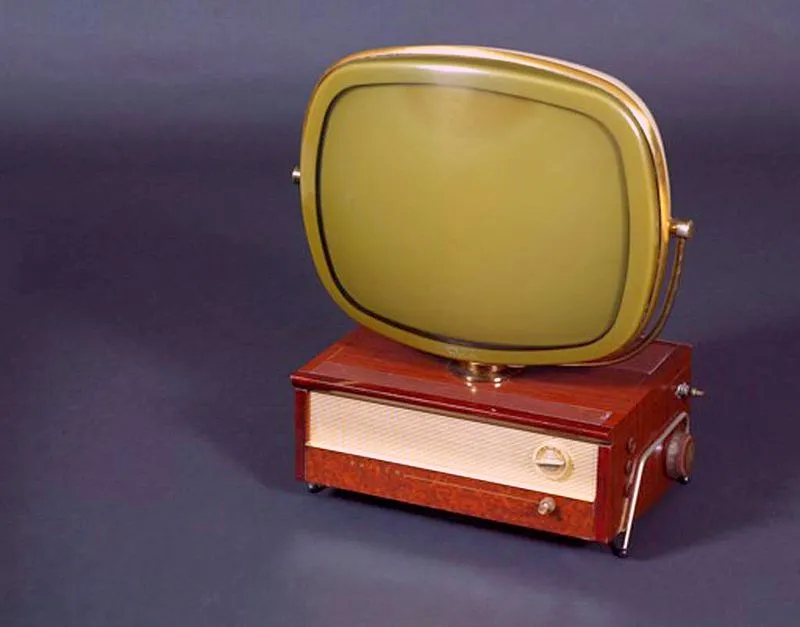
https://www.timetoast.com/timelines/product-evolution-toothbrush
An important step for Television was taken in 1928 with Octagon made by General Electric. Although it was never mass-produced, it was the setting for what is generally regarded as the world's first tv drama, "The Queen's Messenger." It displayed images on its 3-inch screen using mechanical, rotating disc technology.
The difference is enormous if we consider Samsung modern flat screens. However, some of the old TV models seem to differentiate in other ways. Before being bought by Ford, Philco’s Predicta models (17’’ or 21’’ screens) were quite stylish if you ask me.
Philco's Predicta, 1958

https://en.wikipedia.org/wiki/Predicta
They were also marketed at that time as being more modern than other televisions, considering the thinner picture tube. Thought produced only from 1958 to 1960, they have definitely made a statement with their futuristic design. It is interesting how many old television models had an oval screen shape back then, including Philco Predicta, Raytheon, or Cossor. Philco Ford was also sold starting from 1974 and it is currently owned by various investors, such as Philips or Electrolux.
At the end of the 2000s, Sony has managed to put the FD Trinitron/WEGA flat version on the table. However, the miracle didn’t last too much, considering the invasion of plasma televisions, and then LCD-based ones which were focused on ‘thin’ designs.
It seems surprising today that our TVs, which once were so huge and having massive tubes, come now in a smart version that is not only thinner but also allows you to surf the web, record emissions, play games, and so on.
